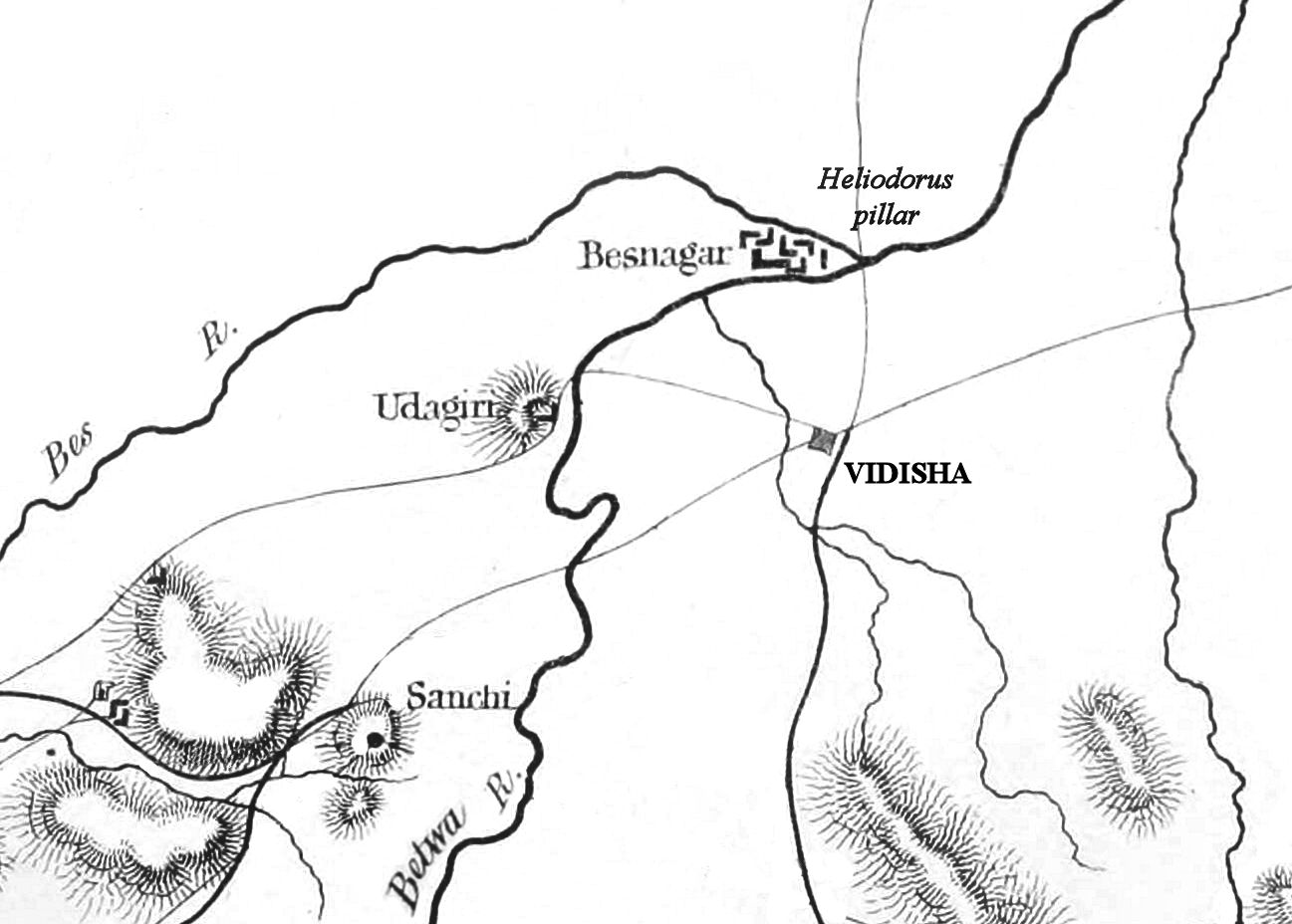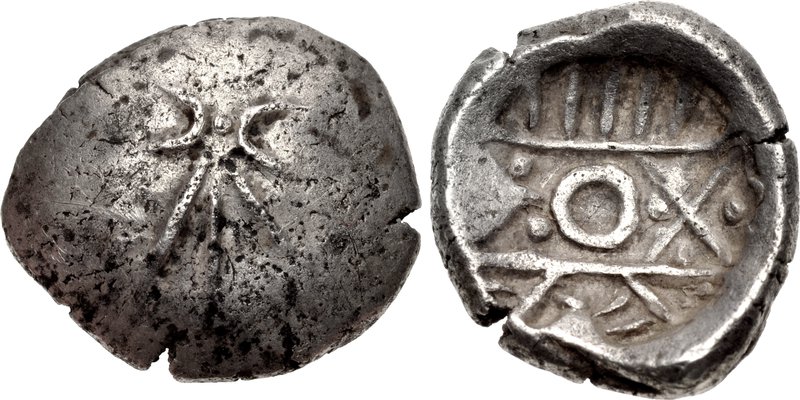|
Narwar Coinage
The various Kings of the Nagas of Narwar issued coins of ¼, ½ and 1 kakini, from 5–15 mm in size and all issued in bronze. Designs were humped bull facing left, wheel peacock, trident and various other designs. The Nagas of Narwar occupied the region of Padmavati, Kantipuri, Mathura and Vidisha around the period of 200-340 AD. In this period there was substantial trade between India and Rome in spices, fabric and gold. Text used was in the Brahmi script of an early Prakrit The Prakrits (; sa, prākṛta; psu, 𑀧𑀸𑀉𑀤, ; pka, ) are a group of vernacular Middle Indo-Aryan languages that were used in the Indian subcontinent from around the 3rd century BCE to the 8th century CE. The term Prakrit is usu ... language. References {{DEFAULTSORT:Narwar Coinage Ancient currencies Coins of India History of Uttar Pradesh Historical currencies of India ... [...More Info...] [...Related Items...] OR: [Wikipedia] [Google] [Baidu] |
Bull
A bull is an intact (i.e., not castrated) adult male of the species ''Bos taurus'' (cattle). More muscular and aggressive than the females of the same species (i.e., cows), bulls have long been an important symbol in many religions, including for sacrifices. These animals play a significant role in beef ranching, dairy farming, and a variety of sporting and cultural activities, including bullfighting and bull riding. Due to their temperament, handling requires precautions. Nomenclature The female counterpart to a bull is a cow, while a male of the species that has been castrated is a ''steer'', '' ox'', or ''bullock'', although in North America, this last term refers to a young bull. Use of these terms varies considerably with area and dialect. Colloquially, people unfamiliar with cattle may refer to both castrated and intact animals as "bulls". A wild, young, unmarked bull is known as a ''micky'' in Australia.Sheena Coupe (ed.), ''Frontier Country, Vol. 1'' (Weldon R ... [...More Info...] [...Related Items...] OR: [Wikipedia] [Google] [Baidu] |
Peacock
Peafowl is a common name for three bird species in the genera ''Pavo (genus), Pavo'' and ''Afropavo'' within the tribe Pavonini of the family Phasianidae, the pheasants and their allies. Male peafowl are referred to as peacocks, and female peafowl are referred to as peahens, although peafowl of either sex are often referred to colloquialism, colloquially as "peacocks." The two Asiatic species are the blue or Indian peafowl originally of the Indian subcontinent, and the green peafowl of Southeast Asia; the one African species is the Congo peafowl, native only to the Congo Basin. Male peafowl are known for their piercing calls and their extravagant plumage. The latter is especially prominent in the Asiatic species, which have an eye-spotted "tail" or "train" of covert feathers, which they display as part of a courtship ritual. The functions of the elaborate iridescent Animal coloration, colouration and large "train" of peacocks have been the subject of extensive scientific debat ... [...More Info...] [...Related Items...] OR: [Wikipedia] [Google] [Baidu] |
Trident
A trident is a three- pronged spear. It is used for spear fishing and historically as a polearm. The trident is the weapon of Poseidon, or Neptune, the God of the Sea in classical mythology. The trident may occasionally be held by other marine divinities such as Tritons in classical art. Tridents are also depicted in medieval heraldry, sometimes held by a merman-Triton. In Hinduism, it is the weapon of Shiva, known as ''trishula'' (Sanskrit for "triple-spear"). Etymology The word "trident" comes from the French word ''trident'', which in turn comes from the Latin word ' or ': ''tri'' meaning "three" and ''dentes'' meaning "teeth", referring specifically to the three prongs, or "teeth", of the weapo The Greek language, Greek equivalent is (''tríaina''), from Proto-Greek ''trianja'', meaning "threefold". The Greek term does not imply three of anything specific, and is vague about the shape, thus the assumption it was originally of "trident" form has been challenged. Latin ... [...More Info...] [...Related Items...] OR: [Wikipedia] [Google] [Baidu] |
Padmavati Pawaya
Padmavati, identified with modern Pawaya in Madhya Pradesh, was an ancient Indian city mentioned in several classic Sanskrit texts, Malatimadhavam of Bhavabhuti, Harshacharita of Bana, and Sarasvatīkaṇṭhabharaṇa of Raja Bhoja. Bhavabhuti describes the city with tall mansions and temples with shikharas and gates, located between Para and the Sindhu rivers. It is also mentioned in inscriptions like the Kokkala Grahapati inscription of Khajuraho. The inscription mentions that the city had rows of tall mansions. The dust used to arise because of running of strong horses. Identification Alexander Cunningham identified Padmavati with present Narwar near Gwalior. M B Garde carried out excavations at Pawaya in 1924-25, 1933–34 and 1941. He identifies Pawaya with ancient Padmavati rejecting Cunningham’s identification with Narwar. Coins of several Naga kings, who have been dated between 210-340 AD, have been found at Pawaya. Antiquities Among the antiquities found at P ... [...More Info...] [...Related Items...] OR: [Wikipedia] [Google] [Baidu] |
Kantipuri
The Naga (IAST: Nāga) dynasty ruled parts of north-central India during the 3rd and the 4th centuries, after the decline of the Kushan Empire and before the rise of the Gupta Empire. Its capital was located at Padmavati, which is identified with modern Pawaya in Madhya Pradesh. Modern historians identify it with the family that is called Bharashiva (IAST: Bhāraśiva) in the records of the Vakataka dynasty. According to the Puranic texts as well as numismatic evidence, dynasties known as the Nagas also ruled at Vidisha, Kantipuri, and Mathura. All these Naga dynasties may have been different branches of a single family, or may have been a single family that ruled from different capitals at different times. No concrete conclusions can be drawn regarding this based on the available historical evidence. Territory In Madhya Pradesh, Naga coins have been discovered at Pawaya, Narwar, Gohad, Vidisha, Kutwar (Kotwal), and Ujjain. In Uttar Pradesh, they have been discovered a ... [...More Info...] [...Related Items...] OR: [Wikipedia] [Google] [Baidu] |
Mathura, Uttar Pradesh
Mathura () is a city and the administrative headquarters of Mathura district in the Indian state of Uttar Pradesh. It is located approximately north of Agra, and south-east of Delhi; about from the town of Vrindavan, and from Govardhan. In ancient times, Mathura was an economic hub, located at the junction of important caravan routes. The 2011 Census of India estimated the population of Mathura at 441,894. In Hinduism, Mathura is birthplace of Krishna, which is located at the Krishna Janmasthan Temple Complex. It is one of the Sapta Puri, the seven cities considered holy by Hindus, also called Mokshyadayni Tirth. The Kesava Deo Temple was built in ancient times on the site of Krishna's birthplace (an underground prison). Mathura was the capital of the kingdom of Surasena, ruled by Kansa, the maternal uncle of Krishna. Mathura is part of the Lord Krishna circuit (Mathura,Vrindavan, Barsana, Govardhan, Kurukshetra, Dwarka and Bhalka). Janmashtami is grandly celebrate ... [...More Info...] [...Related Items...] OR: [Wikipedia] [Google] [Baidu] |
Vidisha
Vidisha (विदिशा, formerly known as Bhelsa and known as Besnagar in ancient times) is a city in central Madhya Pradesh, India. It is located 62.5 km northeast of the state capital, Bhopal. The name "Vidisha" is derived from the nearby river "Bais", mentioned in the Puranas. The district was created as Bhilsa District in 1904 by joining the tehsils of Vidisha (also known as Bhilsa) and Basoda (but not Basoda State) which were then part of Gwalior state. After India's independence in 1947, the former princely state of Gwalior became part of Madhya Bharat state, which was formed in 1948. Vidishā was the administrative headquarters of Bhelsa, or Bhilsa, during the Medieval period. It was renamed Vidisha in 1956. Vidisha is also amongst the 112 Aspirational District in the Aspirational District Programme launched by NITI Aayog in 2018. Demographics As of the 2011 Census of India, Vidisha had a population of 155,959. Males constitute 53.21% of the population and ... [...More Info...] [...Related Items...] OR: [Wikipedia] [Google] [Baidu] |
Brāhmī Script
Brahmi (; ; ISO: ''Brāhmī'') is a writing system of ancient South Asia. "Until the late nineteenth century, the script of the Aśokan (non-Kharosthi) inscriptions and its immediate derivatives was referred to by various names such as 'lath' or 'Lat', 'Southern Aśokan', 'Indian Pali', 'Mauryan', and so on. The application to it of the name Brahmi 'sc. lipi'' which stands at the head of the Buddhist and Jaina script lists, was first suggested by T rriende Lacouperie, who noted that in the Chinese Buddhist encyclopedia ''Fa yiian chu lin'' the scripts whose names corresponded to the Brahmi and Kharosthi of the ''Lalitavistara'' are described as written from left to right and from right to left, respectively. He therefore suggested that the name Brahmi should refer to the left-to-right 'Indo-Pali' script of the Aśokan pillar inscriptions, and Kharosthi to the right-to-left 'Bactro-Pali' script of the rock inscriptions from the northwest." that appeared as a fully developed scrip ... [...More Info...] [...Related Items...] OR: [Wikipedia] [Google] [Baidu] |
Prakrit
The Prakrits (; sa, prākṛta; psu, 𑀧𑀸𑀉𑀤, ; pka, ) are a group of vernacular Middle Indo-Aryan languages that were used in the Indian subcontinent from around the 3rd century BCE to the 8th century CE. The term Prakrit is usually applied to the middle period of Middle Indo-Aryan languages, excluding earlier inscriptions and the later Pali. ''Prākṛta'' literally means "natural", as opposed to ''saṃskṛta'', which literally means "constructed" or "refined". Prakrits were considered the regional spoken (informal) languages of people, and Sanskrit was considered the standardized (formal) language used for literary, official and religious purposes across Indian kingdoms of the subcontinent. Literary registers of Prakrits were also used contemporaneously (predominantly by śramaṇa traditions) alongside Classical Sanskrit of higher social classes. Etymology The dictionary of Monier Monier-Williams (1819–1899), and other modern authors however, interpret ... [...More Info...] [...Related Items...] OR: [Wikipedia] [Google] [Baidu] |
Ancient Currencies
Ancient history is a time period from the beginning of writing and recorded human history to as far as late antiquity. The span of recorded history is roughly 5,000 years, beginning with the Sumerian cuneiform script. Ancient history covers all continents inhabited by humans in the period 3000 BCAD 500. The three-age system periodizes ancient history into the Stone Age, the Bronze Age, and the Iron Age, with recorded history generally considered to begin with the Bronze Age. The start and end of the three ages varies between world regions. In many regions the Bronze Age is generally considered to begin a few centuries prior to 3000 BC, while the end of the Iron Age varies from the early first millennium BC in some regions to the late first millennium AD in others. During the time period of ancient history, the world population was already exponentially increasing due to the Neolithic Revolution, which was in full progress. While in 10,000 BC, the world population stood at ... [...More Info...] [...Related Items...] OR: [Wikipedia] [Google] [Baidu] |
Coins Of India
The Coinage of India began anywhere between early 1st millennium BCE to the 6th century BCE, and consisted mainly of copper and silver coins in its initial stage.Allan & Stern (2008) The coins of this period were ''Karshapanas'' or ''Pana''. A variety of earliest Indian coins, however, unlike those circulated in West Asia, were stamped bars of metal, suggesting that the innovation of stamped currency was added to a pre-existing form of token currency which had already been present in the Janapadas and Mahajanapada kingdoms of the Early historic India. The kingdoms that minted their own coins included Gandhara, Kuntala, Kuru, Magadha, Panchala, Shakya, Surasena, Surashtra and Vidarbha etc. The tradition of Indian coinage in the 2nd millennium evolved with Indo Islamic rule in India.Allan & Stern (2008) and the British Raj in the 19th century.Sutherland (2008) Origin of currency in Indian subcontinent Prehistoric and Bronze Age origins Cowry shells were first used in ... [...More Info...] [...Related Items...] OR: [Wikipedia] [Google] [Baidu] |










